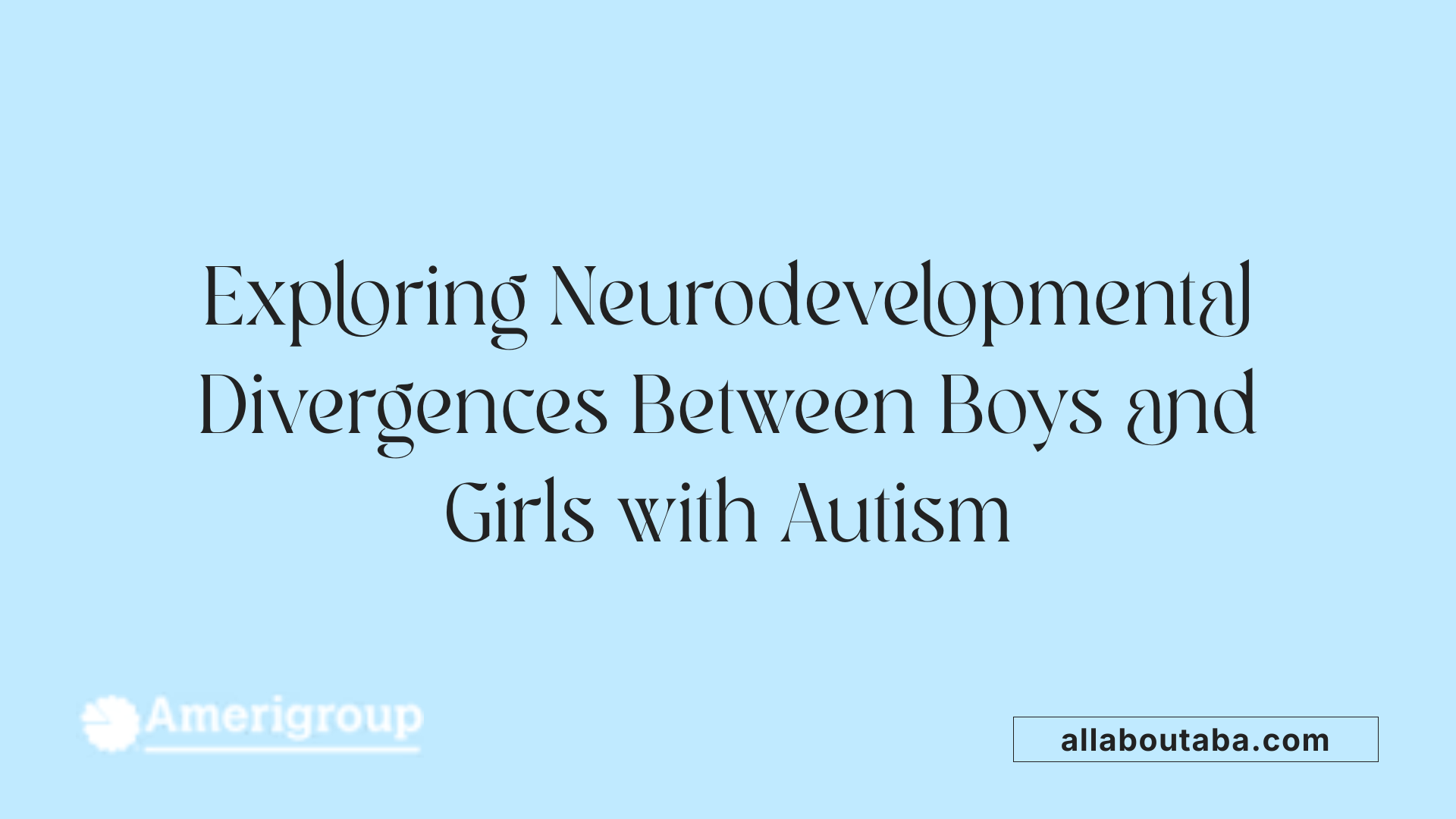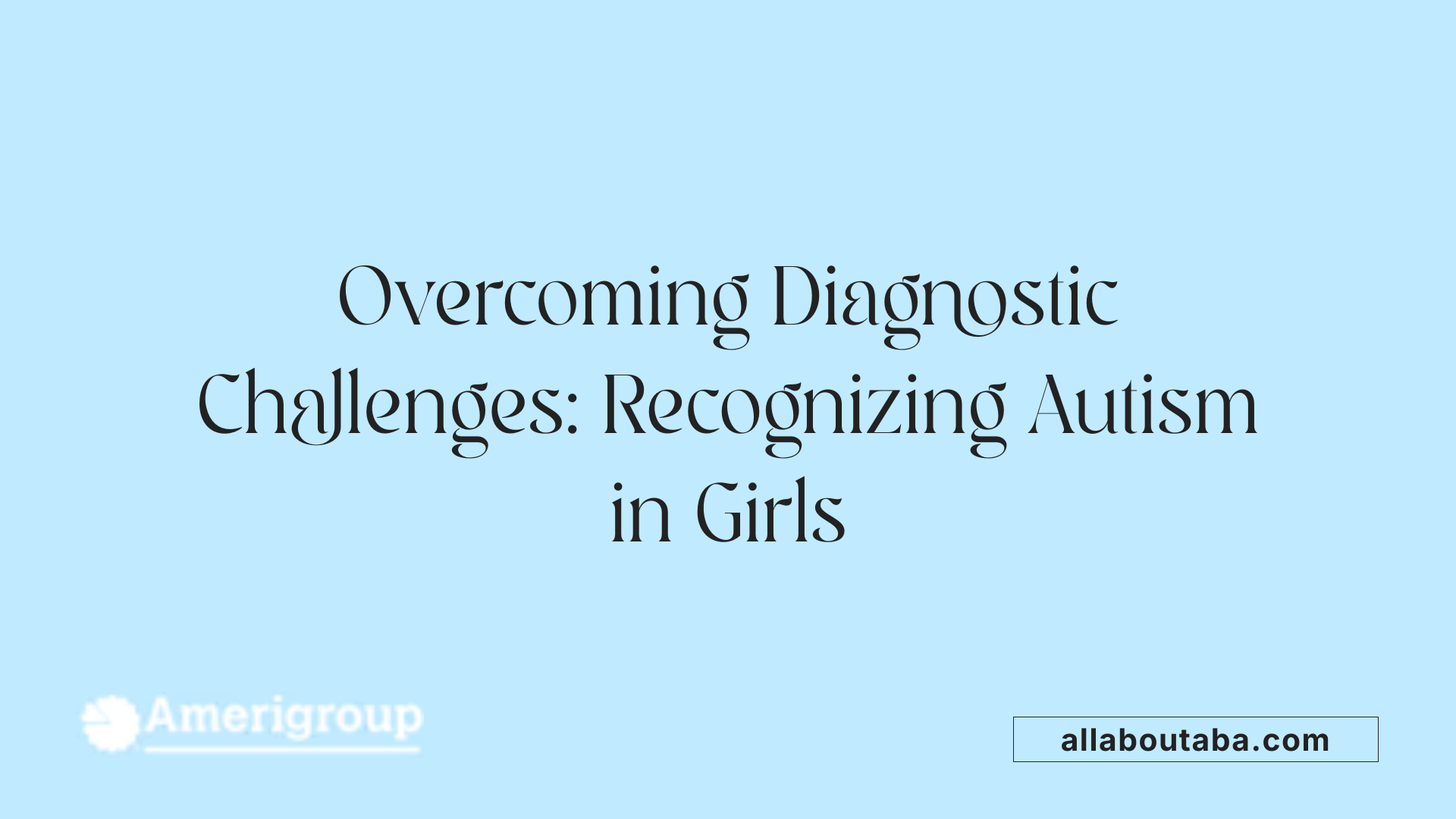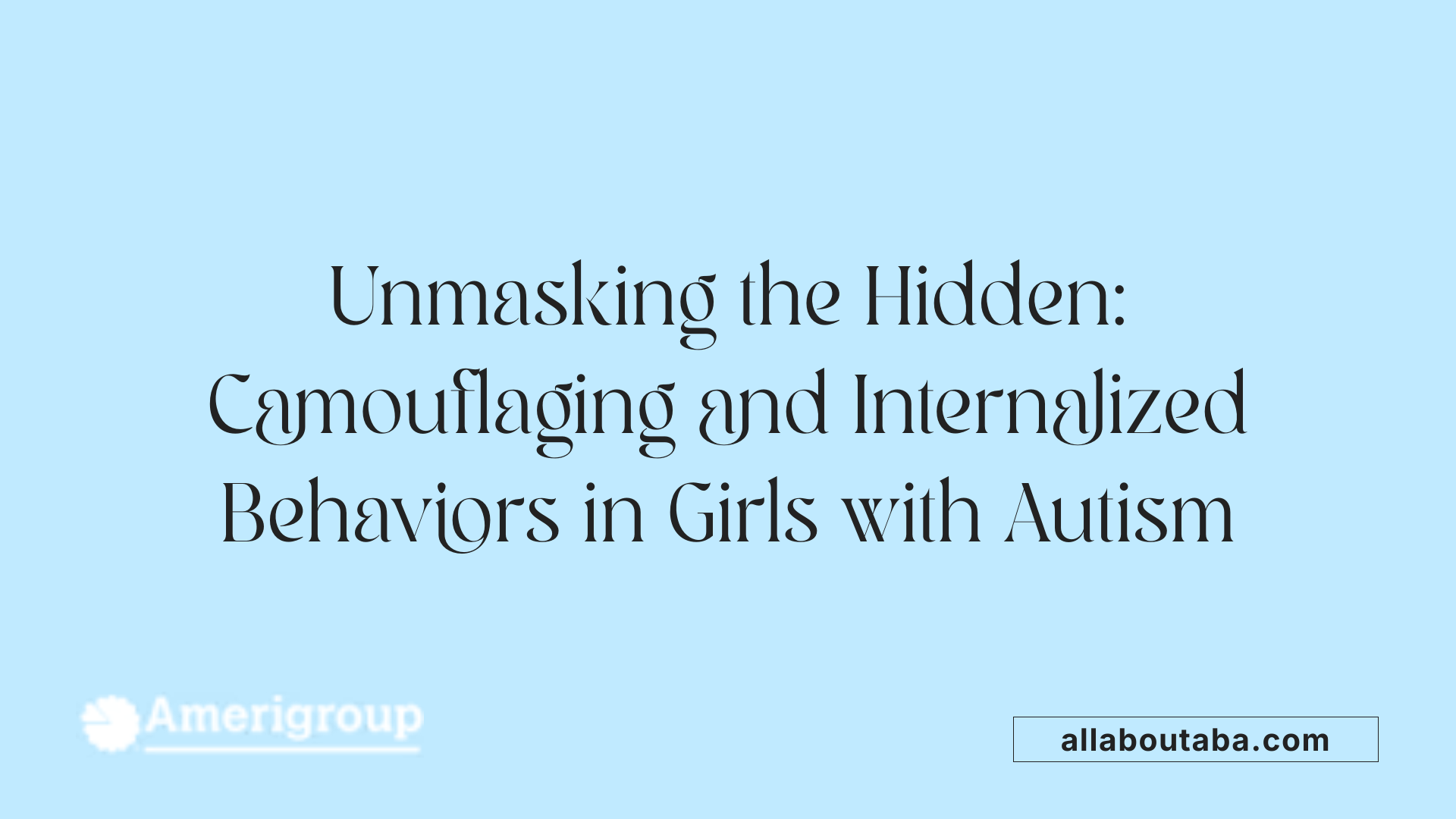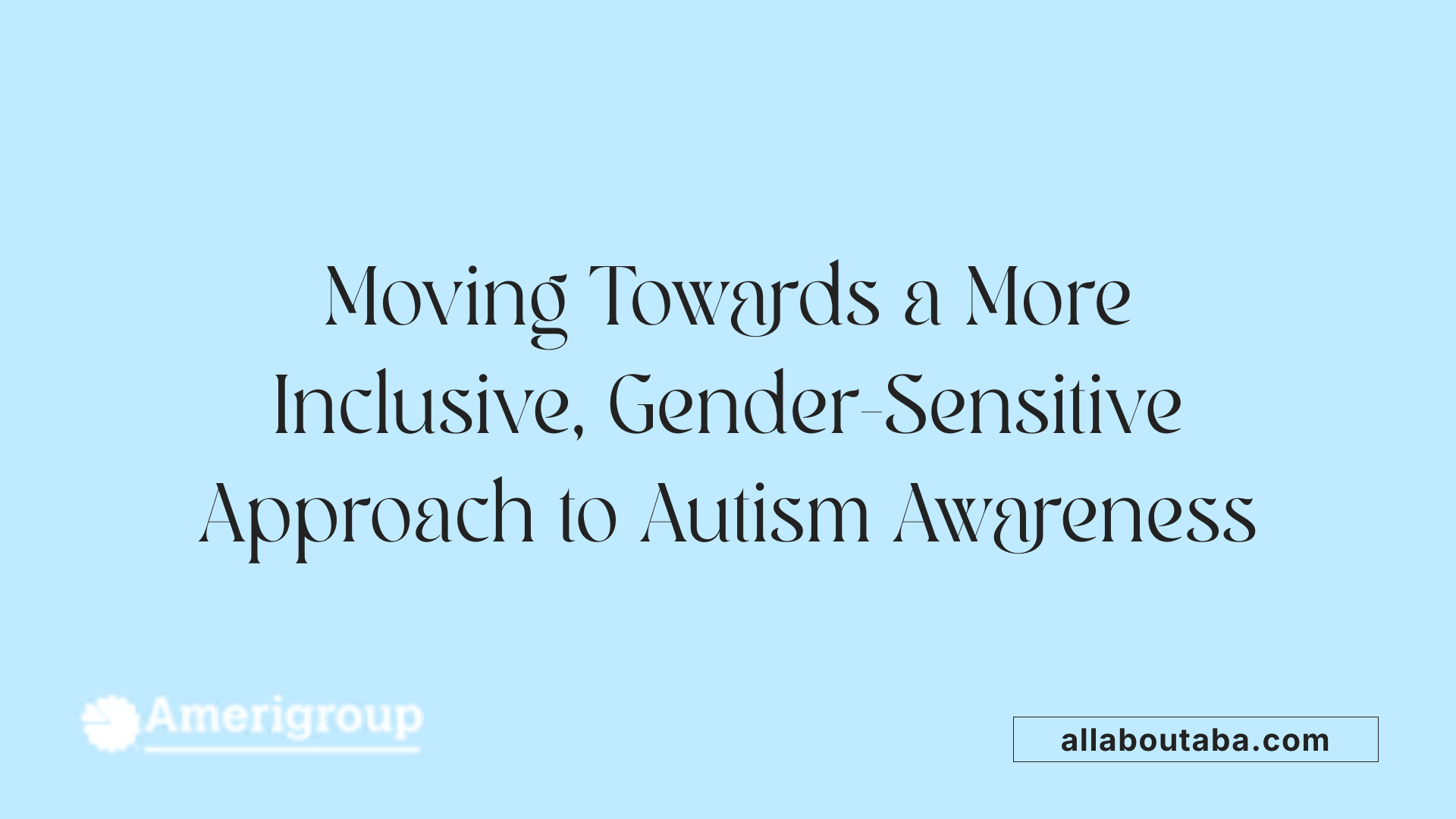Autism In Boys vs. Girls
Understanding Autism Across Genders
Autism Spectrum Disorder (ASD) manifests differently in boys and girls, impacting diagnosis, treatment, and support. While traditionally viewed through a male-centric lens, recent research is shedding light on the unique neurobiological, behavioral, and social differences experienced by each gender. This article explores these distinctions in detail, emphasizing the importance of tailored approaches to diagnosis and intervention.
Prevalence Rates and Biological Underpinnings
What is the prevalence rate of autism in boys versus girls?
Autism spectrum disorder (ASD) affects boys considerably more often than girls. The widely cited ratio is about 4:1, meaning that for every girl diagnosed with autism, approximately four boys receive the diagnosis. However, recent research and meta-analyses suggest this ratio may be closer to 3:1, indicating that fewer girls are diagnosed relative to boys than previously thought.
The disparity in diagnosis rates isn't solely due to biological differences. Underdiagnosis of girls is a recognized issue because they often present symptoms differently. Girls tend to mask or camouflage their autistic traits, making their symptoms less noticeable to clinicians. They often exhibit internalized behaviors such as anxiety and social withdrawal, which can be overlooked as part of typical development.
How do genetic factors influence these gender disparities?
Genetics plays a significant role in autism development, with about 83% of cases linked to genetic factors involving mutations on numerous genes. Interestingly, females seem to require a higher genetic burden to manifest autism, indicating a potential protective effect. This phenomenon is sometimes called the "female protective effect."
Genes such as NLGN4X have been associated with autism, and females tend to have more rare gene variants active in regions like the striatum, which is involved in social interactions and language processing.
Additionally, X chromosome differences contribute to the disparity. Females have two X chromosomes, which may offer a form of genetic compensation against autism-related mutations. Conversely, males, with only one X chromosome, are more vulnerable to mutations affecting neurodevelopment.
Neurobiological mechanisms behind prevalence differences
Neurological studies reveal that brain structures in girls with autism often differ from boys. Regions like the motor cortex, supplementary motor area, and cerebellum show gender-specific patterns of gray matter, which influence motor and social behaviors.
Autistic girls tend to have a thicker cortex at age 3, and they show faster cortical thinning as they grow, differences that diminish into middle childhood. Brain imaging also indicates different usage of neural networks during social interactions between autistic girls and boys—as well as between autistic girls and neurotypical girls. For instance, girls with autism might rely on different circuits to process social cues, further complicating diagnosis.
Overall, the interplay of genetics and brain development results in distinct behavioral and neurobiological profiles in girls versus boys with autism, contributing to the prevalence discrepancy and challenges in diagnostic identification in females.
Neurodevelopmental and Brain Structural Differences

Are there neurological or brain development differences between autistic boys and girls?
Research utilizing MRI scans across multiple time points between ages 2 and 13 shows that there are significant differences in brain development between autistic boys and girls. Notably, autistic girls demonstrate a thicker cortex than non-autistic girls at around age 3, with this thickness accounting for approximately 9% of the cortical surface. This increased cortical thickness in young girls with autism indicates distinct early neural development compared to boys.
Furthermore, as children age, girls with autism experience a faster rate of cortical thinning during middle childhood. This accelerated process results in a narrowing of the differences in cortical thickness between autistic girls and non-autistic peers, suggesting a unique developmental trajectory. In contrast, boys with autism tend to show different patterns of brain maturation, especially in motor, language, and visuospatial attention areas.
In addition to cortical thickness, structural differences are evident in specific brain regions involved in motor control, such as the primary motor cortex, supplementary motor area, parietal lobe, and temporal gyri. Brain connectivity patterns in autistic girls correlate with the severity of motor symptoms, and notable differences are found in neural networks in regions responsible for social cognition.
These structural variances are complemented by genetic findings indicating that girls with autism often have more pronounced and severe genetic mutations, possibly due to protective factors linked to their two X chromosomes. Overall, such neuroimaging evidence underscores that autism manifests differently in male and female brains, influencing behavioral expressions and diagnostic considerations.
Behavioral and Symptomatic Variations

How do behavioral traits and symptoms of autism vary between boys and girls?
The ways in which autism manifests can differ noticeably between boys and girls. Girls on the spectrum tend to display less obvious repetitive behaviors and restricted interests, often smudging their autism traits with behaviors deemed socially acceptable. For instance, they might focus on activities such as drawing or reading and engage in private repetitive behaviors like re-reading books or watching the same show repeatedly, which are less overt than typical stereotypical autism symptoms.
Additionally, autistic girls are more likely to mask their symptoms by mimicking the social behaviors of their peers. This masking involves consciously or unconsciously suppressing autistic responses to appear more neurotypical. As a result, their social motivation might look higher, and despite struggling with the nuances of social interactions—such as reading sarcasm or interpreting facial expressions—they often try to form friendships. These internalized symptoms include anxiety, sensory sensitivities, and difficulties with emotional regulation.
In contrast, boys with autism often exhibit more externalized challenging behaviors. These can include overt repetitive actions, difficulty with transitions, and more noticeable social impairments. Their behaviors are generally conspicuous, which makes diagnosis more straightforward and earlier.
This divergence in behavioral presentation impacts how autism is diagnosed in children. Girls’ behaviors are more subtle and may mimic typical girlhood interests, or they might be adept at camouflaging their difficulties. Consequently, many girls are diagnosed later or remain undiagnosed, missing early intervention opportunities.
In summary, understanding these differences is crucial. Recognizing that girls often hide their autism behind socially acceptable behaviors and internalized symptoms can help improve diagnosis accuracy and ensure they receive appropriate support early in life.
| Behavioral Traits | Girls with Autism | Boys with Autism | Additional Notes |
|---|---|---|---|
| Repetitive behaviors | Subtle, private (e.g., skin picking, organizing) | Overt, stereotypical (e.g., hand-flapping) | Girls hide behaviors; boys show openly |
| Interests | Aligned with societal norms (e.g., reading, drawing) | Often unusual or stereotypical interests | Interests can influence diagnosis |
| Masking behaviors | Frequently mask symptoms by mimicking peers | Less likely to mask | Masking leads to underdiagnosis |
| Social motivation | Higher, with attempts to connect despite difficulties | Lower, with external challenges | Social efforts can seem typical |
| Emotional symptoms | Internalized (e.g., anxiety, depression) | Externalized (e.g., tantrums) | Internalizing issues are common in girls |
Understanding these nuanced behavioral patterns helps differentiate how autism presents across genders, leading to more tailored and effective support strategies.
Challenges in Diagnosis and Recognition

What are the challenges in diagnosing autism in girls compared to boys?
Diagnosing autism in girls presents unique challenges that are often overlooked in traditional assessments. Boys are more frequently diagnosed with autism, with estimates indicating nearly four times the diagnosis rate compared to girls. This discrepancy largely stems from differences in how autism manifests across genders.
Girls on the autism spectrum tend to mask their symptoms more effectively through social camouflaging. They often imitate social behaviors, maintain eye contact superficially, and adapt their interests to match societal expectations, which makes their autism less noticeable. These internalized behaviors include hiding sensory sensitivities, social anxiety, and strict routines, which don’t always stand out in clinical evaluations.
The current diagnostic criteria are primarily based on male-oriented presentations, focusing on overt and external behaviors like repetitive actions and obvious social difficulties. Since girls often exhibit subtler signs—such as internalized social struggles, perfectionism, or engaging in socially acceptable activities like reading or drawing—they are at risk of being overlooked.
Additionally, societal stereotypes tend to associate autism with boys who display more obvious behaviors, leading clinicians and parents to miss early signs in girls. As a result, many girls receive a diagnosis much later—often by age 6 or 7, or even into adolescence—missing the critical window for early intervention.
Recognizing internal behaviors, such as reluctance to speak in class, sensory sensitivities, and difficulties with friendships, is vital. Healthcare professionals need to be aware that autism in girls may look different, emphasizing the importance of tailored screening tools and careful observation of subtle signs.
In summary, the combination of masking behaviors, gender stereotypes, and criteria that focus on external symptoms creates a diagnostic gap for girls with autism. Enhancing awareness and refining assessment practices are essential steps toward more accurate and timely diagnosis, enabling better support and outcomes for girls on the spectrum.
Genetics and Biological Protective Factors
Is there a genetic basis for the gender differences observed in autism?
Research strongly suggests that genetic factors play a significant role in the gender disparity seen in autism spectrum disorder. Boys tend to carry a higher burden of genetic mutations associated with autism, which makes them more susceptible to developing the condition. In contrast, females seem to benefit from a sort of biological buffer or "protective effect" that requires more risk factors or genetic mutations to trigger autism.
One explanation lies in sex-linked gene variations. Several genes on the X chromosome, such as NLGN4X, are associated with neural development and have been linked to autism. Since females have two X chromosomes, they are more likely to have a backup in case one carries a mutation, which helps mitigate the risk. This genetic redundancy offers some protection and partly accounts for the lower prevalence of autism in females.
Hormonal influences also contribute to this protective effect. Prenatal hormones like testosterone are believed to influence brain development differently in males and females. Elevated prenatal testosterone levels have been associated with increased autism risk, primarily affecting boys. The relative hormonal environment in females may support more typical neurodevelopment, providing an additional layer of protection.
Overall, the interplay between sex-linked genes, hormonal factors, and the genetic burden acquired during development contributes to why autism manifests more frequently in boys. Females' unique genetic makeup and hormonal environment help reduce their susceptibility, although the exact mechanisms continue to be a focus of ongoing research.
| Factor | Description | Impact on Autism Risk |
|---|---|---|
| Sex-linked Genes | Genes on sex chromosomes (e.g., NLGN4X) | Protective in females via gene redundancy |
| Hormonal Influences | Prenatal hormones such as testosterone | Higher levels linked to increased risk in males |
| Genetic Burden | Number and severity of mutations on various genes | Greater in males, fewer in females for ASD risk |
Understanding these genetic and biological factors is crucial for developing tailored interventions and increasing diagnostic accuracy for females on the autism spectrum. Recognizing that females may have different genetic pathways and protective mechanisms offers insights into creating more personalized support strategies.
The Role of Camouflaging and Internalized Behaviors in Girls

Why are girls often diagnosed later or missed entirely in autism screening?
Girls with autism frequently experience delays in diagnosis or remain undiagnosed, primarily because their symptoms often present differently than in boys. Unlike the more overt behavioral signs typically observed in boys, girls tend to mask their traits through various internalized behaviors and social camouflage.
Camouflaging, also known as masking, involves conscious or unconscious efforts by girls to hide behaviors associated with autism. They may imitate social responses such as making eye contact, engaging in social conversations, or suppress their repetitive interests to appear more neurotypical. This process requires significant mental effort and can be exhausting, yet it effectively conceals their autistic traits.
Internalized symptoms are another factor that complicates diagnosis in girls. Instead of outward signs like hand-flapping or overt repetitive behaviors, girls may show signs such as social withdrawal, anxiety, perfectionism, or difficulty forming friendships. They might be reluctant to speak in class, prefer internal activities like reading or drawing, and appear well-adjusted on the surface.
The traditional diagnostic criteria and screening tools, developed largely based on male presentations of autism, tend to overlook these subtler, internalized symptoms. Clinicians might misinterpret or not recognize behaviors such as perseverative thinking or intense interests because they seem typical or even desirable in girls.
Delayed diagnosis can have serious impacts. Without early support, girls may struggle with social interactions, develop low self-esteem, or experience mental health issues like anxiety and depression. The persistent effort to mask their difficulties can lead to stress, burnout, and a higher risk of internalizing disorders.
In conclusion, the combination of camouflaging behaviors and internalized symptoms is a major reason why many girls with autism are diagnosed late or not at all. Increasing awareness of these presentation patterns among clinicians, teachers, and parents is essential to ensure earlier detection and support for girls on the spectrum.
Impacts of Gender Differences on Support and Intervention
What guidance is available for educators and caregivers to recognize autism in girls versus boys?
Recognizing autism in girls requires an understanding of how their presentation often differs from boys, making diagnosis more challenging. Girls tend to mask their symptoms more effectively, exhibiting internalized behaviors like withdrawal, perfectionism, and intense interests that align with societal stereotypes.
Guidance for educators and caregivers emphasizes observing subtle signs, such as obsessive organizing, sensory sensitivities, difficulties in friendships, and internal struggles like anxiety or masking behaviors. These signs may be less obvious but are critical for early identification.
Training staff to understand gender-specific manifestations of autism can improve detection. For example, promoting awareness that girls may pass as neurotypical or be good at imitating social cues helps prevent underdiagnosis. Supporting a classroom environment that values diverse behaviors and challenges gender stereotypes further aids in recognizing girls with autism.
Encouraging individualized assessments and fostering open communication with families are essential steps. Creating accepting environments that validate different ways of engaging socially ensures that girls receive the support they need early. Early diagnosis is vital, as it allows for timely interventions aimed at developing social, emotional, and communication skills.
Why is early diagnosis particularly important for girls?
Early diagnosis in girls offers significant benefits. Identifying autism sooner can lead to access to tailored support services that cater to their specific needs, especially considering their tendency to internalize difficulties.
Intervening earlier enhances social interaction skills, reduces anxiety, and prevents secondary issues like depression or low self-esteem. Moreover, early support can help girls develop coping techniques and improve their quality of life.
Given that girls often receive diagnosis 2-3 years later than boys—sometimes missed entirely—raising awareness is essential. Recognizing internalized behaviors, sensory sensitivities, and subtle social challenges ensures that girls do not fall through the cracks.
How do gender differences influence mental health outcomes?
Girls with undiagnosed or late-diagnosed autism are at higher risk for mental health issues, including anxiety, depression, eating disorders, and suicidal ideation. Masking, while a survival strategy, can lead to emotional exhaustion and identity struggles.
Support systems that acknowledge these gender-specific challenges can mitigate adverse outcomes. Providing mental health resources, developing social skills in supportive environments, and addressing internalized stressors are critical components of effective intervention.
Overall, understanding these distinctions encourages a holistic approach to support, ensuring that girls with autism are not only diagnosed early but are also supported comprehensively to promote well-being.
Support guidance for autism girls vs. boys
| Aspect | Boys with Autism | Girls with Autism | Importance of Tailoring Support |
|---|---|---|---|
| Presentation of Symptoms | More external, stereotypical behaviors | Subtler, internalized, masking behaviors | Early recognition and personalized approaches improve outcomes |
| Typical Diagnosis Age | Usually earlier | Often later, sometimes missed | Timely diagnosis enables intervention tailored to individual needs |
| Common Co-morbidities | Less internalizing disorders | Higher rates of anxiety, depression | Addressing mental health is crucial for overall development |
| Brain Development Patterns | Different neural network involvement | Unique brain structure and connectivity | Understanding these helps customize interventions |
| Behavioral Support Needs | Focus on social skills and routines | Support for internal struggles, masking | Developing programs that recognize hidden signs and support authentic growth |
Recognizing these differences supports a more effective, personalized approach, ultimately enhancing the quality of life for girls and boys on the autism spectrum.
Conclusion: Towards a Gender-Inclusive Understanding of Autism
 Understanding autism through a gender-sensitive lens is vital for accurate diagnosis, effective intervention, and inclusive support. Scientific studies reveal that autism presents differently in girls than in boys, influenced by biological, neurological, and social factors. Girls often mask their symptoms better, display internalized behaviors, and exhibit subtler social and behavioral traits, which can lead to underdiagnosis or late diagnosis.
Understanding autism through a gender-sensitive lens is vital for accurate diagnosis, effective intervention, and inclusive support. Scientific studies reveal that autism presents differently in girls than in boys, influenced by biological, neurological, and social factors. Girls often mask their symptoms better, display internalized behaviors, and exhibit subtler social and behavioral traits, which can lead to underdiagnosis or late diagnosis.
Neurological research highlights differences in brain regions such as the motor cortex, supplementary motor area, and various neural networks, indicating distinct developmental pathways. Genetic investigations further support the notion that girls may require more risk factors or gene mutations to manifest autism, adding to the complexity of diagnosis.
Advocating for early detection and tailored support is fundamental. Recognizing internalized behaviors, masking, and unique interests in girls can improve diagnostic accuracy, enabling timely interventions that foster social skills, mental health, and overall well-being.
Future research should aim to deepen understanding of these gender-specific differences. Developing gender-sensitive diagnostic tools, personalized therapies, and awareness campaigns will help bridge current gaps. Incorporating these insights will ensure that all individuals on the autism spectrum receive the recognition and help they deserve, fostering a more inclusive, supportive environment for everyone.
A Call for Gender-Inclusive Perspectives in Autism
In understanding autism spectrum disorder, acknowledging gender differences is essential. Autism in girls often remains underdiagnosed due to internalized behaviors, masking, and less stereotypical symptoms. Recognizing these nuances demands gender-sensitive diagnostic approaches, targeted research, and tailored interventions. Early diagnosis and support can significantly improve quality of life for autistic girls, helping them develop social and emotional skills and reducing risks of mental health issues. As scientific research advances, ongoing efforts must focus on inclusive practices that honor the diverse presentations across genders, fostering a more comprehensive understanding of autism for families, educators, clinicians, and researchers alike.
References
- Researchers find key differences in brain development between ...
- Study finds differences between brains of girls, boys with autism
- Autism statistics and facts | Autism Speaks
- How do autistic girls present differently than boys? - Autism Awareness
- Why Many Autistic Girls Are Overlooked - Child Mind Institute
- Autism: Understanding the difference between girls and boys
- Why Are Boys Diagnosed with Autism More Than Girls?
Other articles
Recent articles

Best Practices For Telehealth Autism Therapy

How To Help Autistic Children Develop Friendship Skills

How Schools Can Support Autistic Students In Career Prep

Best Strategies For Autism-Friendly Event Planning

Understanding Noncontingent Reinforcement In Autism Behavior Plans

How Drama Therapy Benefits Autistic Individuals

Best Practices For Autism-Friendly Fitness And Recreation Centers

Best Ways To Promote Healthy Social Media Use For Autistic Teens

How To Help Autistic Children Cope With Public Speaking

Autism And Strategies For Managing Unexpected Changes

Best Podcasts About Autism For Parents And Educators

Autism And The Impact Of Seasonal Changes On Behavior

The Role Of Diet In Managing Co-Occurring Conditions With Autism

Sleep Challenges In Autism And Practical Solutions

Best Ways To Build Daily Routines For Autistic Children

Best Practices For Supporting Autistic Entrepreneurs

Autism And Strategies For Navigating Large Social Gatherings

Adaptive Sports And Recreational Activities For People With Autism

Autism And The Benefits Of Story-Based Learning Activities

Understanding The Role Of Play In Autism Development

Autism And The Impact Of Environmental Noise On Learning

How To Create Autism-Friendly Community Spaces

Autism And Chronic Health Conditions: What To Know

The Role Of Care Managers In Autism Life Planning

How To Teach Social Boundaries To Autistic Children

How Autistic Individuals Experience Empathy Differently

How To Support Autistic Employees In Remote Work Settings

Autism And The Relationship Between Motor Skills And Learning

How To Create Community Resource Guides For Autism Families

How To Teach Daily Living Skills To Autistic Teens

Autism And The Impact Of Mind-Body Practices On Stress Reduction

Autism And The Benefits Of Outdoor Group Activities

How To Create Autism-Friendly Sensory Paths In Schools

Best Practices For Autism-Friendly Park And Recreation Areas

Autism And Strategies For Reducing School Refusal

Supporting Autistic Individuals In Public Speaking

The Role Of Diet In Managing Autism Symptoms

The Benefits Of Gardening Clubs For Autism Social Development

How To Prepare Autistic Children For Dental Visits

Autism And Employment: Career Paths That Work

Best Practices For Autism-Friendly Hotels And Lodging

The Impact Of Screen Time On Autism Development

Autism Screening Tools For Early Childhood

The Role Of Physical Exercise In Autism Therapy

Best Strategies For Supporting Autistic College Students

The Role Of Technology In Autism Early Detection

Sensory-Friendly Classroom Design Ideas For Autistic Students

The Role Of Speech Therapy In Building Social Communication Skills

Best Strategies For Handling Autistic Burnout In Adults

Autism And The Importance Of Predictability In Routine

Autism And Peer Education: Teaching Acceptance In Schools

Best Practices For Sensory-Friendly Libraries And Reading Rooms

Self-Advocacy Skills For Autistic Adults

The Role Of Technology In Autism Peer Communication

Promoting Physical Activity In Children With Autism

How To Prepare Autistic Children For Medical Procedures

The Role Of Social Media In Autism Advocacy And Awareness

The Impact Of Sensory Rooms In Public Facilities For Autism

How To Create An Autism-Friendly Holiday Celebration

Best Practices For Inclusive Education For Autistic Students

Autism And Mental Health: Recognizing Signs Of Distress

Best Practices For Sensory-Friendly Waiting Rooms

The Role Of Teachers In Early Autism Red Flag Identification

Autism-Friendly Housing Design Features

Autism-Friendly Housing Design Features

How Environmental Modifications Improve Autism Outcomes

Autism And Technology-Based Learning Tools

Supporting Autistic Children Through Changes In Routine

The Link Between Autism And Working Memory Challenges

Best Practices For Autism-Friendly Cooking Classes

Autism And The Benefits Of Structured Music Lessons

Best Books To Teach Kids About Autism Acceptance

Sensory Diets And Their Benefits For Autism Management

How To Prepare Autistic Teens For Driver’s Education

How To Teach Autistic Teens About Healthy Relationships

The Role Of Visual Prompts In Building Daily Habits For Autism

Addressing Sleep Regression In Children With Autism

Understanding Social Stories And How They Help Autistic Children

Navigating Insurance Coverage For Autism Therapy Services

How To Prepare Autistic Adults For Independent Travel

Supporting Autistic Individuals In Volunteer Work

How Mindfulness Practices Can Support Autism Well-Being

Understanding Hyperfocus And Special Interests In Autism

Understanding Stimming As A Self-Regulation Tool

Sensory-Based Interventions For Autism At Home

Best Ways To Introduce Self-Advocacy In Autistic Teens

Best Ways To Support Autistic Employees In Customer Service Roles

Best Practices For Autism-Friendly Volunteer Programs

Autism And The Benefits Of Sensory Play For Emotional Growth

Autism And Strategies For Building Peer Relationships

Understanding How Autism Affects Memory Processing

Autism And Strategies For Building Coping Skills In Teens

The Role Of Parent Training In Autism Intervention Programs

Autism-Friendly Workplace Accommodations

Using Visual Timers For Autism Time Management

What Is ABA Therapy?

Autism and Sleep

Do Plastic Toys Cause Autism?

Autism Facial Expressions

Autism and Motor Skills
We’re All About You, Your Family, and Your Child

